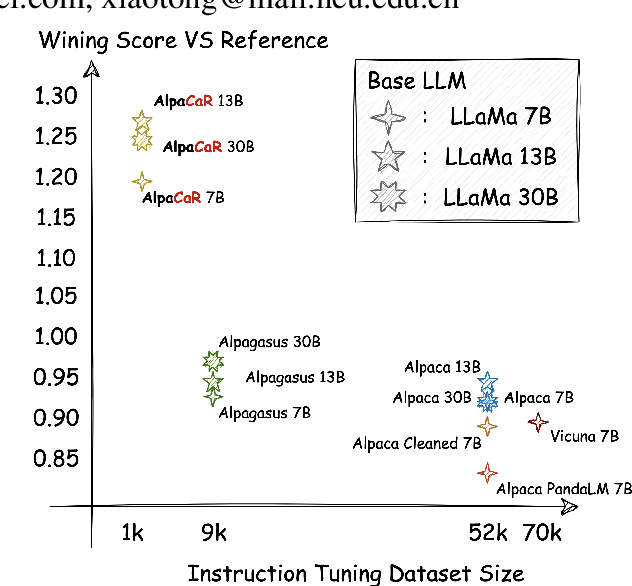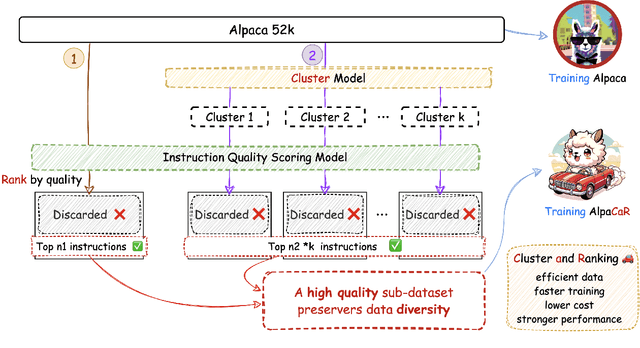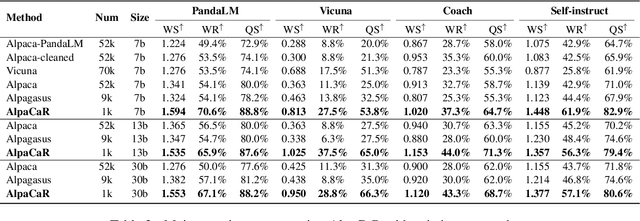Hongxia Ma
R1-T1: Fully Incentivizing Translation Capability in LLMs via Reasoning Learning
Feb 27, 2025Abstract:Despite recent breakthroughs in reasoning-enhanced large language models (LLMs) like DeepSeek-R1, incorporating inference-time reasoning into machine translation (MT), where human translators naturally employ structured, multi-layered reasoning chain-of-thoughts (CoTs), is yet underexplored. Existing methods either design a fixed CoT tailored for a specific MT sub-task (e.g., literature translation), or rely on synthesizing CoTs unaligned with humans and supervised fine-tuning (SFT) prone to catastrophic forgetting, limiting their adaptability to diverse translation scenarios. This paper introduces R1-Translator (R1-T1), a novel framework to achieve inference-time reasoning for general MT via reinforcement learning (RL) with human-aligned CoTs comprising six common patterns. Our approach pioneers three innovations: (1) extending reasoning-based translation beyond MT sub-tasks to six languages and diverse tasks (e.g., legal/medical domain adaptation, idiom resolution); (2) formalizing six expert-curated CoT templates that mirror hybrid human strategies like context-aware paraphrasing and back translation; and (3) enabling self-evolving CoT discovery and anti-forgetting adaptation through RL with KL-constrained rewards. Experimental results indicate a steady translation performance improvement in 21 languages and 80 translation directions on Flores-101 test set, especially on the 15 languages unseen from training, with its general multilingual abilities preserved compared with plain SFT.
Clustering and Ranking: Diversity-preserved Instruction Selection through Expert-aligned Quality Estimation
Feb 28, 2024



Abstract:With contributions from the open-source community, a vast amount of instruction tuning (IT) data has emerged. Given the significant resource allocation required by training and evaluating models, it is advantageous to have an efficient method for selecting high-quality IT data. However, existing methods for instruction data selection have limitations such as relying on fragile external APIs, being affected by biases in GPT models, or reducing the diversity of the selected instruction dataset. In this paper, we propose an industrial-friendly, expert-aligned and diversity-preserved instruction data selection method: Clustering and Ranking (CaR). CaR consists of two steps. The first step involves ranking instruction pairs using a scoring model that is well aligned with expert preferences (achieving an accuracy of 84.25%). The second step involves preserving dataset diversity through a clustering process.In our experiment, CaR selected a subset containing only 1.96% of Alpaca's IT data, yet the underlying AlpaCaR model trained on this subset outperforms Alpaca by an average of 32.1% in GPT-4 evaluations. Furthermore, our method utilizes small models (355M parameters) and requires only 11.2% of the monetary cost compared to existing methods, making it easily deployable in industrial scenarios.
Automatic Instruction Optimization for Open-source LLM Instruction Tuning
Nov 22, 2023Abstract:Instruction tuning is crucial for enabling Language Learning Models (LLMs) in responding to human instructions. The quality of instruction pairs used for tuning greatly affects the performance of LLMs. However, the manual creation of high-quality instruction datasets is costly, leading to the adoption of automatic generation of instruction pairs by LLMs as a popular alternative in the training of open-source LLMs. To ensure the high quality of LLM-generated instruction datasets, several approaches have been proposed. Nevertheless, existing methods either compromise dataset integrity by filtering a large proportion of samples, or are unsuitable for industrial applications. In this paper, instead of discarding low-quality samples, we propose CoachLM, a novel approach to enhance the quality of instruction datasets through automatic revisions on samples in the dataset. CoachLM is trained from the samples revised by human experts and significantly increases the proportion of high-quality samples in the dataset from 17.7% to 78.9%. The effectiveness of CoachLM is further assessed on various real-world instruction test sets. The results show that CoachLM improves the instruction-following capabilities of the instruction-tuned LLM by an average of 29.9%, which even surpasses larger LLMs with nearly twice the number of parameters. Furthermore, CoachLM is successfully deployed in a data management system for LLMs at Huawei, resulting in an efficiency improvement of up to 20% in the cleaning of 40k real-world instruction pairs. We release the training data and code of CoachLM (https://github.com/lunyiliu/CoachLM).
 Add to Chrome
Add to Chrome Add to Firefox
Add to Firefox Add to Edge
Add to Edge